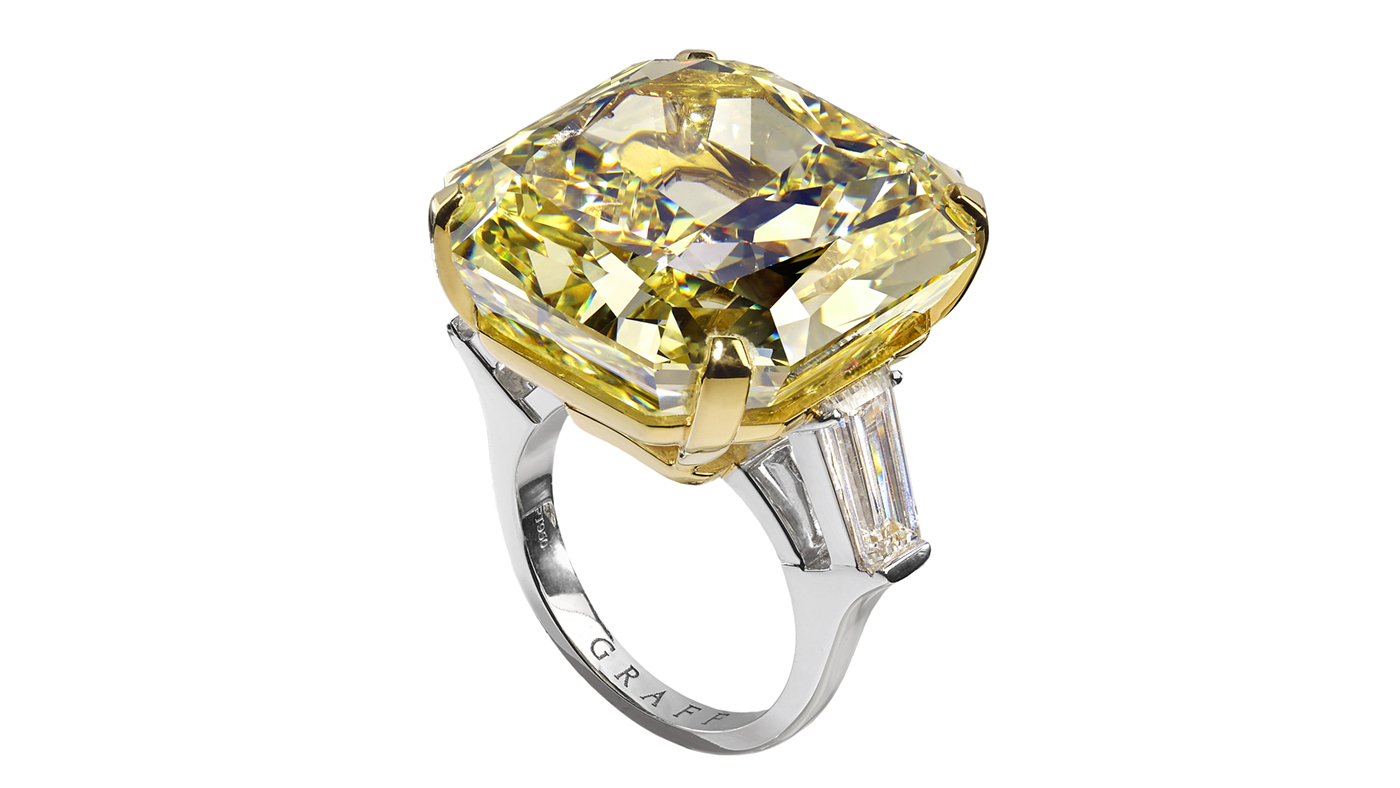The diamond standard: an expert’s guide to buying the best jewellery
Gemologist Grant Mobley offers his top tips for choosing the perfect stone for Valentine’s Day and beyond

Flowers and chocolates may be a welcome treat but few gifts say love - or at the very least, deep admiration - like a diamond.
Yet choosing a special gem for that special someone can be tricky, with the advent of laboratory-grown diamonds adding to the already dazzling range of options.
To help you get the best bling for your buck, The Week Portfolio turned to gemologist and self-confessed jewellery fanatic Grant Mobley, from the global Diamond Producers Association (DPA).
The Week
Escape your echo chamber. Get the facts behind the news, plus analysis from multiple perspectives.

Sign up for The Week's Free Newsletters
From our morning news briefing to a weekly Good News Newsletter, get the best of The Week delivered directly to your inbox.
From our morning news briefing to a weekly Good News Newsletter, get the best of The Week delivered directly to your inbox.

How do lab-grown diamonds differ from the real deal?
Natural diamonds and laboratory-created diamonds can look similar to the naked eye, but there are significant differences in physical growth structure, rarity, and most notably, inherent value. Natural diamonds are rare and finite, a miracle of nature created billions of years ago under extreme conditions about 100 miles below the Earth’s surface. This makes each diamond unique – just as no two snowflakes are alike, no two natural diamonds are identical.
By contrast, synthetic diamonds are made in factories all over the world in potentially unlimited quantities in a short amount of time.
How can you tell the difference?
A free daily email with the biggest news stories of the day – and the best features from TheWeek.com
There are commercially available testing instruments that can detect the differences between natural diamonds and synthetic diamonds. Among the detectable differences, synthetic diamonds have physical growth structures and inclusions that are different to those of natural diamonds.
The inclusions in a natural diamond were formed billions of years ago and often contain perfectly preserved billion-year-old elements of great scientific value. Conversely, the manufacturing process of synthetic diamonds may leave marks and colour variations inside the stone.
Despite the differences between natural and synthetic diamonds, a recent study revealed that nearly half of diamond purchasers - 44% - were unaware of the significant differences in value, rarity, and physical growth structure. It’s important that consumers are made aware of these differences so they are able to make informed purchasing decisions.
Which is the best investment?
In my opinion, only natural diamonds could be considered an investment. In addition to the emotional value of natural diamonds, they are financially valuable because of their rarity. Natural diamond production peaked in 2005, and has been diminishing yearly ever since. The growing rarity of natural diamonds and increasing demand, especially from India and China, should cause the value of diamonds to continue to grow over time.
Synthetic diamonds are suited for fashion jewellery. The value of synthetic diamonds dropped significantly in 2018, with the price of a 1-carat stone falling by almost 50% relative to the price of a comparable natural diamond.
What is being done to manage the environmental impact of bringing natural diamonds to consumers?
Natural diamond producers are committed to the environment and have spearheaded a broad array of innovative sustainability initiatives. In fact, diamond producers are global leaders in helping to protect wildlife, wilderness and other natural resources that are important to local communities where they work.
Through their own programmes and funding of local conservation organisations, diamond producers contribute $258m (£200m) in environmental benefits each year and protect 1,000 squares miles of natural land – about the same size as Yosemite National Park.
In addition, diamonds could soon play a positive role in mitigating the impact of carbon emissions. The natural ore that contains diamonds within the Earth, kimberlite, has the amazing property of capturing carbon gases from the atmosphere. One of our DPA members is working on a project to accelerate the capture of carbon gases, and is aiming to have a carbon-neutral project within five to ten years.
Some people use the term “mined diamonds” but you talk about “natural diamonds” - why?
Synthetic diamond manufacturers use the term “mined diamonds” in order to associate natural diamonds with mining activity. In fact, a natural diamond is created by the forces of nature and it exists in its natural form whether it is extracted or not.
The extraction process is not the creation process, so we believe the right term to use is simply natural diamonds. Plus, there are multiple methods for extracting diamonds that do not involve mining as many diamonds have already been naturally pushed to the Earth’s surface over time.
What are your top purchasing tips?
First and foremost, people should make sure they know if they are buying a natural diamond or a synthetic diamond. Ask questions. There are online synthetic diamond producers that sell their products at nearly the same price as natural diamonds without adequately disclosing that the stone has been created in a laboratory.
Second, people should develop a relationship with a trusted jeweller. Diamonds are beautiful miracles of nature that are best examined in person. A trusted jewellery retailer will be available to show you diamond jewellery with no pressure, answer your questions and help you find the best value for your investment.
Third, picking the perfect piece of diamond jewellery is a personal choice. There is no universal definition of the “best diamond”. It’s all about finding the diamond that speaks to and looks best to you.
If you were planning to buy someone a diamond this Valentine’s Day, what would you choose?
For anyone planning to get engaged around Valentine’s Day, a natural diamond engagement ring is definitely the way to go. Getting engaged is about honouring the rare, authentic love between two people, and what could be more rare, precious and authentic than a natural diamond?
For people who are not getting engaged but still want a unique piece of jewellery, I’d recommend a pair of natural diamond stud earrings or a diamond tennis bracelet - both are staples of an everyday jewellery wardrobe that can be worn and passed down for generations.
Kari Wilkin is The Week Digital’s global managing editor. She joined the UK site as production editor in 2017, after moving across from The Week magazine. Her career as a journalist began as a sub-editor at newspapers including The Sun, Metro, the Daily Star and News of the World, followed by stints at Elle and Asda Magazine. She also helped to launch the UK edition of Women’s Health magazine, as chief sub-editor with a sideline in writing; has penned travel and lifestyle articles for titles including The Telegraph and The Sun; and is a contributor on “The Week Unwrapped” podcast.
-
 Into the Woods: a ‘hypnotic’ production
Into the Woods: a ‘hypnotic’ productionThe Week Recommends Jordan Fein’s revival of the much-loved Stephen Sondheim musical is ‘sharp, propulsive and often very funny’
-
 ‘Let 2026 be a year of reckoning’
‘Let 2026 be a year of reckoning’Instant Opinion Opinion, comment and editorials of the day
-
 Why is Iran facing its biggest protests in years?
Why is Iran facing its biggest protests in years?TODAY’S BIG QUESTION Iranians are taking to the streets as a growing movement of civic unrest threatens a fragile stability